Delphiniums are a cottage garden classic, bringing tall, attractive spikes of blooms to your garden year after year.
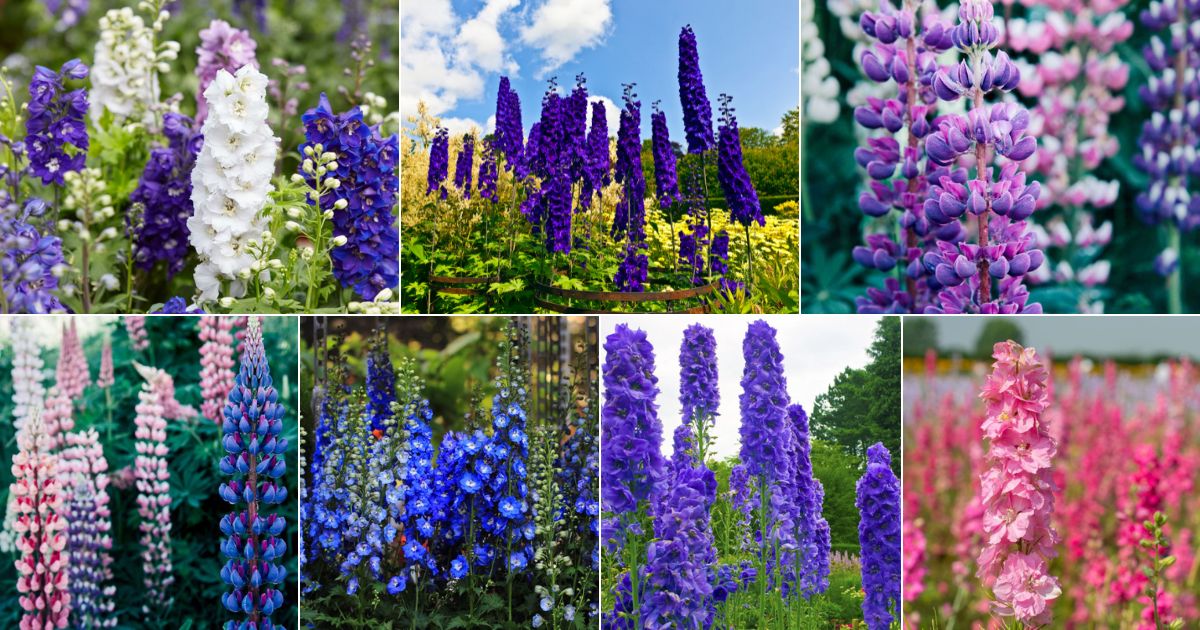
This post will introduce you to the basics of delphinium planting and care, common delphinium diseases, cultivars to consider, and more. You can either read the entire post to explore every aspect of delphinium care, or you can use the advanced jump to select the section you need.
Jump to:
- What Are Delphiniums?
- Delphinium Basics
- Where Do Delphiniums Grow?
- Why Grow Delphiniums?
- Delphinium Landscaping Ideas
- Recommended Delphinium Varieties
- When Do Delphiniums Bloom?
- How Long Do Delphiniums Bloom?
- When to Plant Delphiniums
- Ideal Growing Conditions for Delphiniums
- How to Plant Delphiniums
- How to Care for Delphiniums
- How to Divide and Transplant Delphiniums
- Recommended Planting Combinations for Delphinium
- Frequently Asked Questions About Growing Delphiniums
- Where to Buy Delphiniums
What Are Delphiniums?
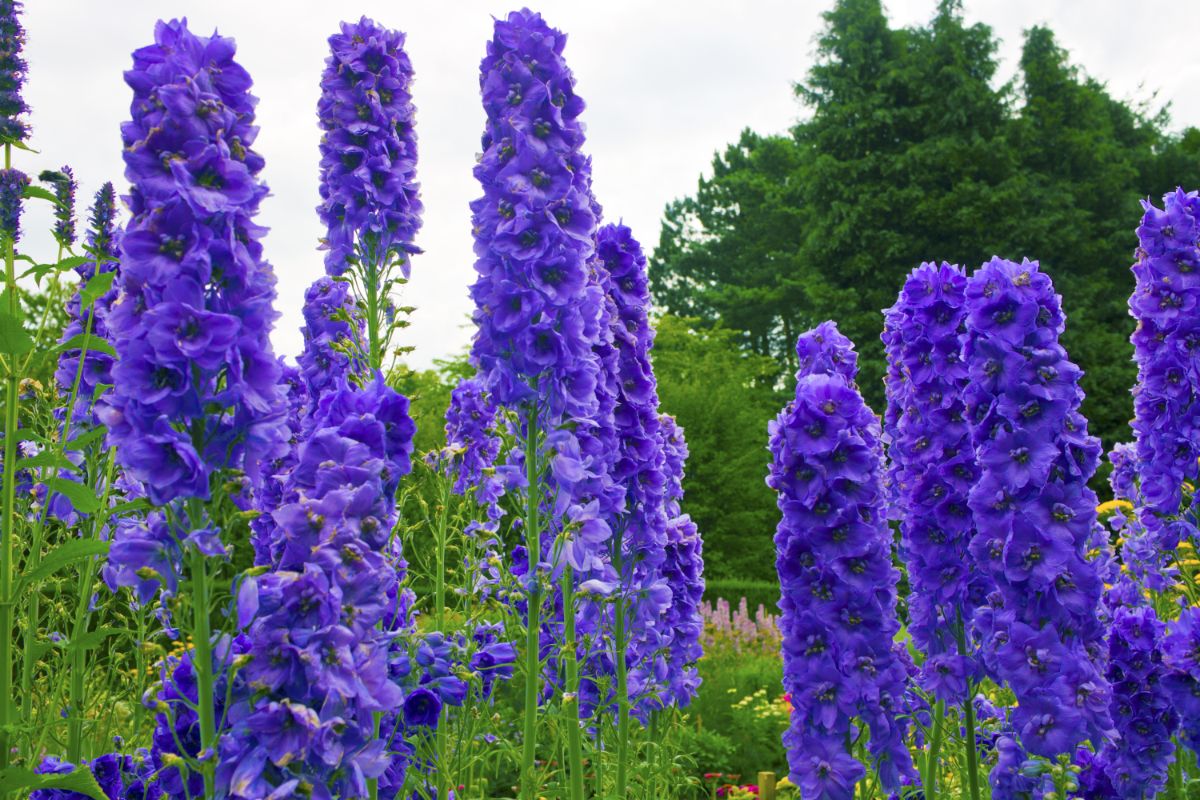
Delphiniums are plants belonging to the genus Delphinium, which contains around 300 species. The Delphinium genus falls into the Ranunculaceae family.
While many people simply call true delphiniums “delphiniums,” they are just as often referred to by their common name, which is “larkspurs.”
That being said, the term “larkspur” is a bit ambiguous, since there are some members of the Consolida genus that also are referred to as “larkspurs.”
You do not need to worry about mixing up these two types of larkspurs, however, since they are really closely related anyway.
Indeed, Consolida can be considered an annual clade within Delphinium. The flowers of Consolida plants look a bit different from those of other Delphiniums. They are also not likely to be referenced as “delphiniums.”
If you are wondering what the origin of the name “delphinium” is, it comes from the Greek word for “dolphin.” Supposedly, some delphinium flowers have blooms that somewhat resemble dolphins.
Delphinium Basics
| Zones: | 3-7 |
| Blooming season: | Summer |
| Expected height: | Up to 6 feet tall |
| Soil: | Rich, moist, well-draining |
| Sun: | Full to partial |
Where Do Delphiniums Grow?
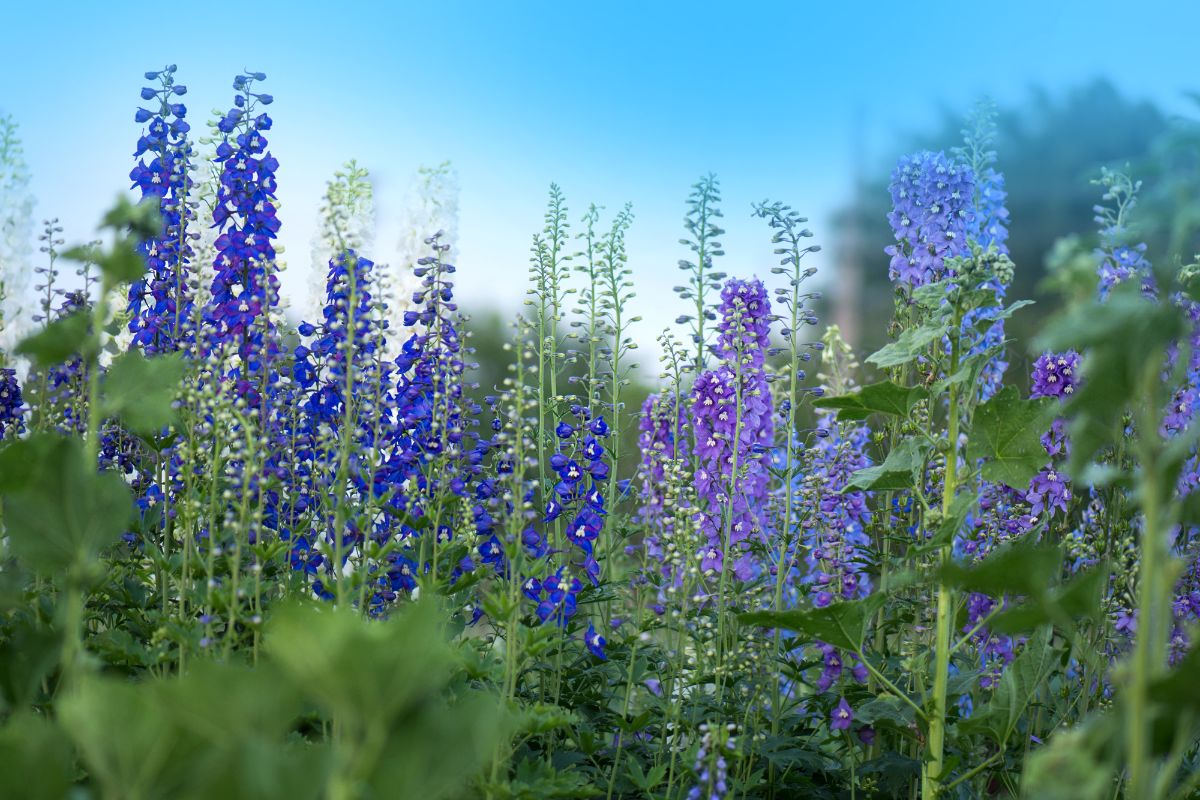
Delphinium plants are native to much of the Northern Hemisphere. You can also find them in Africa up in the mountains.
Today, they are cultivated around the world in zones 3-7.
Why Grow Delphiniums?
Below are some of the top reasons to plant larkspur in your garden:
- Delphiniums are deer-resistant. Rabbits do not like them either.
- Delphinium blooms make excellent cut flowers. With proper care, they can last for up to two weeks, making for long-lasting arrangements.
- These gorgeous plants come in countless cultivars and varieties, including a rainbow of hues and taller and shorter varieties. So, whatever colors you are looking to add to your garden, you can do so with delphiniums.
- Because they are tall flowers, delphiniums are dramatic. Even adding a few of them can make a significant impact on the appearance of your perennial garden.
- Attract pollinators to your garden like bees, butterflies, and even hummingbirds. These pollinators are fun to watch and also have ecological benefits for your garden.
- One drawback of delphiniums is that they are short-lived perennials. Nevertheless, propagating them is easy. So, once you invest in a few delphiniums, it should not be too hard to keep them going.
Delphinium Landscaping Ideas
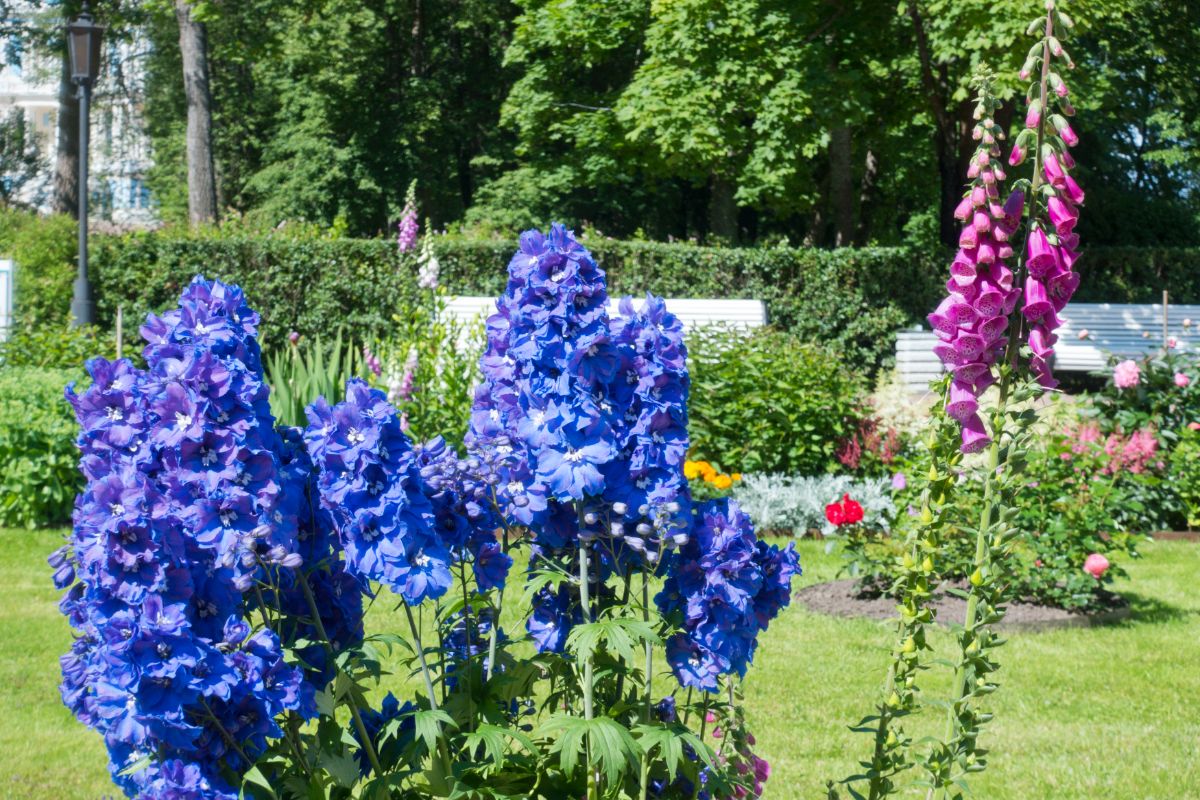
Here is how to use delphinium to enhance your landscaping:
- Cottage garden: Delphiniums are a cottage garden classic, and can go a long way toward helping you capture that particular look and feel.
- Line a fence: Since the flowers stalks of delphiniums are so tall, they can hide an unsightly fence quite nicely. You could also try lining a wall with them to achieve the same purpose. The other advantage of lining a fence or a wall is that the wall or fence itself can provide some shelter from high winds for your plants.
- Pollinator garden: Plant delphiniums among other pollinator favorites to make your garden especially attractive to bees, butterflies and hummingbirds.
- Focal point: With their tall stalks, delphinium flowers instantly draw the eye with a burst of color. That means that if you plant a cluster of them together, they can easily work as a focal point in your landscape.
Recommended Delphinium Varieties
Below are some popular cultivars of delphiniums to consider planting in your garden.
- Delphinium Galahad: If you want white flowers, this plant will delight you with angelic blossoms that contrast vividly with dark green delphinium leaves. It reaches heights of up to 6 feet, and does best with full sun.
- Delphinium Guardian Blue: If you would like blue flowers, you can consider this cultivar. The blooms are a deep bluish-purplish hue that will take your breath away.
- Guardian Early Blue: Another option in the range of blues is this cultivar, which boasts an early bloom time. If you deadhead it, you can continue toenjoy blossoms into late summer.
- Guinevere: This cultivar is a Pacific Giant hybrid that produces light purple flowers.
- Delphinium Highlander Blueberry Pie: If you cannot decide between blue or purple flowers, this cultivar may please you. The double flowers are purple, but lighter in the middles, with hints of blue around outer petals.
- Princess Caroline: The salmon-colored flowers of this cultivar make a lovely contrast with the foliage color.
- Jill Curley: This is among the taller varieties of delphinium, growing as high as 7 feet. It produces white semi-double flowers.
- Black-Eyed Angels: These flowers will spruce up your garden bed with a vivid contrast. The petals are white, but the middles are black.
- Blue Elf: It is not just the blue color of this beautiful delphinium that will delight you, but also its whimsical shape. The shape of each flower resembles an elf hat, making them look like they belong in a fairytale garden.
- Black Knight: Among tall varieties of delphiniums is “Black Knight,” which can produce spikes up to 6 feet high. The flowers are actually a really dark purplish color, not black.
- Cobalt Dreams: The flower stalks on this cultivar produce beautiful indigo blooms.
- Flamenco: Bring a touch of pink to your delphinium border with these ruffled blossoms.
- Blue Lace: The deep blue color of these flowers will delight you, with stalks soaring up to 6 feet.
- Cherry Blossom: For dazzling delphiniums in light pink, plant the “Cherry Blossom” cultivar. It is an excellent choice if you are looking for something that will contrast nicely with other delphiniums in light shades of purple or blue.
- Magic Fountain Lavender: For a type of delphinium that produces shorter spikes, think about this cultivar. The light purple flowers grow on stalks that max out at just 3 feet. It may be a good fit for your container garden.
- Pagan Purples: With delphiniums, you sure have your choice of cultivars if you love the color purple! These double flowers are renowned for their deep hue.
- Summer Skies: If you want a really pale blue color for your delphiniums, this hybrid cultivar will liven up your garden.
- Sweet Sensation: The flowers of this cultivar feature petals in a stunning combination of blue, purple and white. With their ruffled look, the densely-packed blooms may put you in mind of roses.
- Morning Lights: These flowers are white in the middle with purple and blue petals.
- Aurora Lavender: If you like making arrangements with delphiniums, you might sometimes find the foliage gets in the way. Should that be the case, “Aurora Lavender” with its small leaves will be just what you need.
- Atlantis: For a cultivar that produces blossoms with a striking shape, think about planting “Atlantis” in your perennial garden beds. It also can work great in your containers since it only grows up to 3 feet tall.
There are many more examples of beautiful delphinium cultivars out there. Once you start discovering them, it can be hard to stop collecting new varieties.
When Do Delphiniums Bloom?
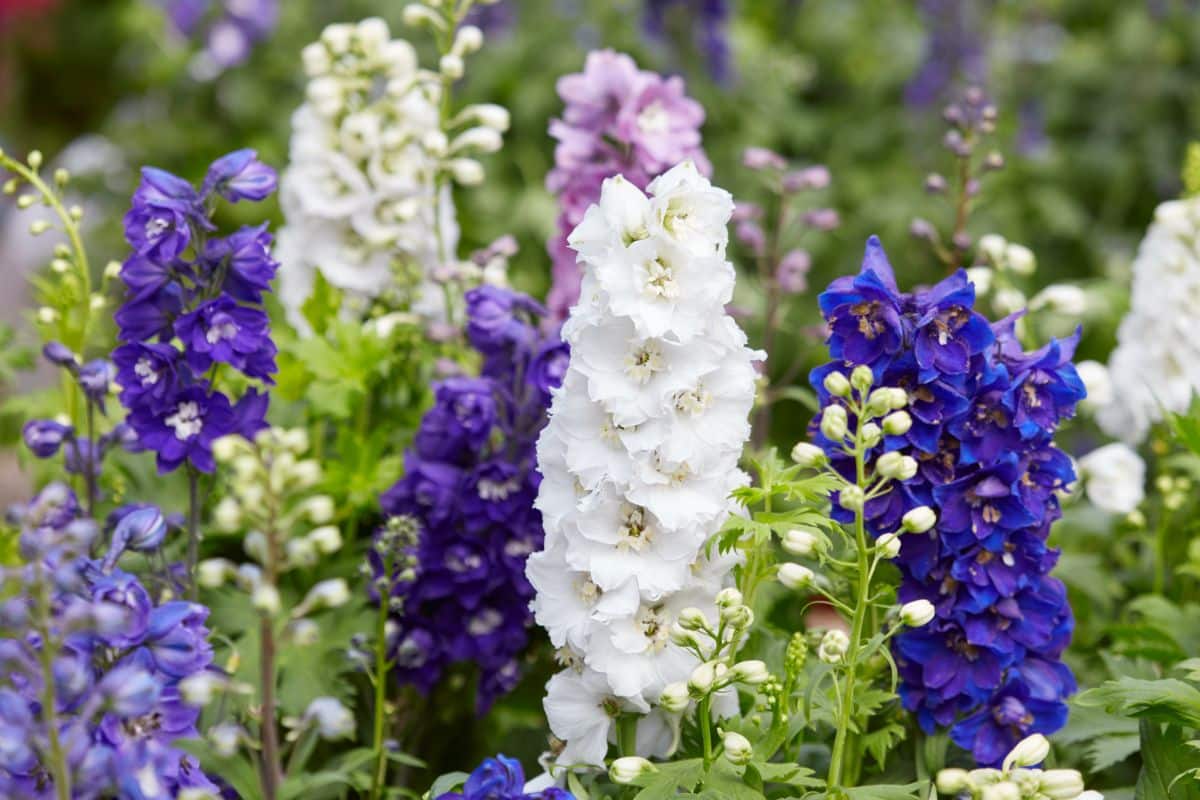
Delphiniums are summer bloomers. But the bloom period can sometimes extend into the early part of fall.
How Long Do Delphiniums Bloom?
You can enjoy delphinium blooms for weeks. Plus, if you deadhead them, you can encourage repeat blooms throughout the season, extending the bloom time.
When to Plant Delphiniums
The best times to plant delphiniums are spring and fall. You may get away with planting them during other seasons as well, but they will be most likely to establish well in those two seasons.
Ideal Growing Conditions for Delphiniums
If you want to grow these cottage-style garden flowers successfully, you need to provide them with the right amount of sun and water as well as the ideal soil type. Let’s take a look at suitable growing conditions for delphiniums.
How Much Sun Do Delphiniums Need?

Delphiniums can grow happily in a spot that receives full or partial sunlight. At a minimum, they need six hours of sun daily. Like most other plants, they do best if they receive their direct sun in the morning. If they are going to have shade, they will benefit from it most in the afternoon.
What Type of Soil is Right for Delphiniums?
Delphiniums appreciate rich, nutritious soil. They also need moist soil, but cannot survive in standing water.
If you have heavy soil, you will need to loosen it up with amendments so that it can drain. Mix in some grit and compost.
Alkaline soil is better for delphiniums than acidic soil. If you need to make your soil more alkaline, you can raise the pH by adding lime or wood ashes. In fact, you may want to add more each spring to help maintain the alkaline conditions over the long term.
How Much Water Do Delphiniums Need?
Delphiniums usually need about an inch of water weekly. The trick is to keep the soil moist but not to let it get soggy. Well-drained soil will help with this.
Be mindful of how you water plants. Delphiniums are prone to developing rot quite easily, so you need to water close to the soil and do not overdo it.
How to Plant Delphiniums
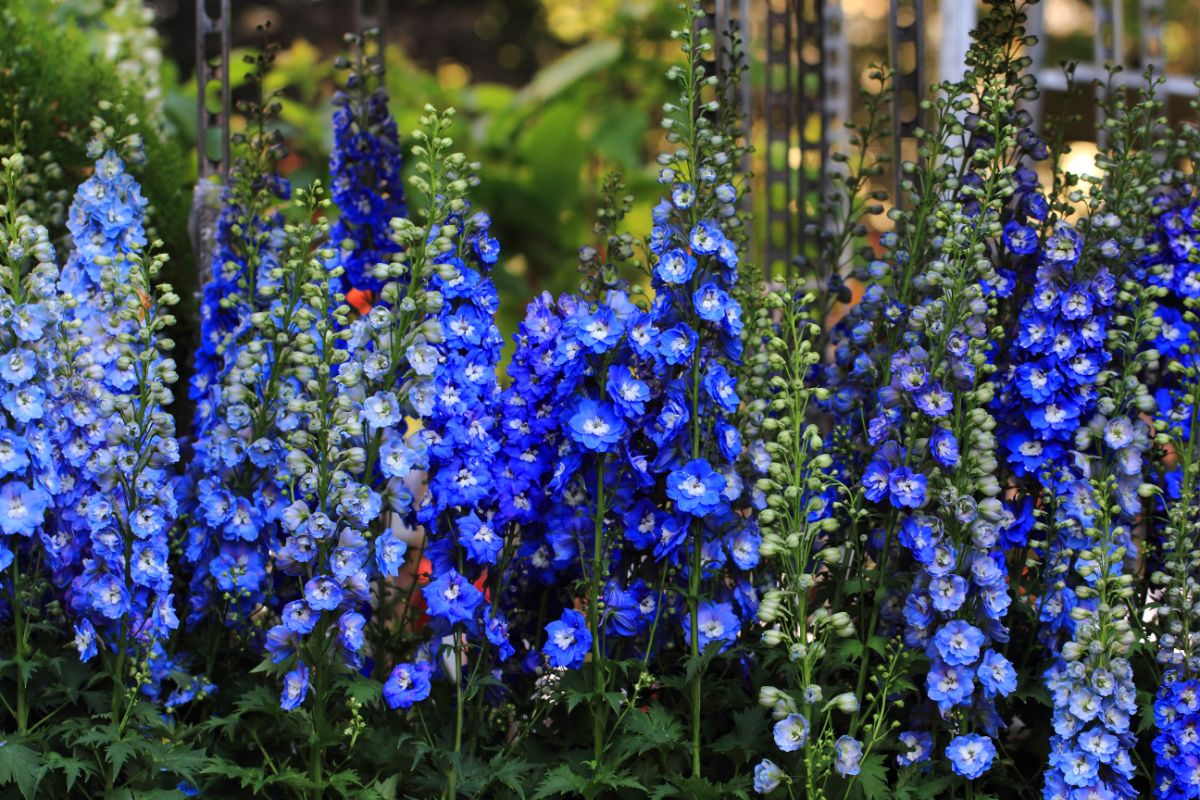
While you can start delphiniums from seed, you will probably get nursery plants. Here is how to plant them in containers or your flower beds.
Container Planting
It is not all that common to grow delphiniums in pots, but with dwarf varieties, it can certainly be done. If you want to have a gorgeous delphinium garden right on your patio or deck, here is how you can do it.
- Get a container that is at least 4 and a half liters. You may want to go as high as 8 liters. Larger pots are fine if you are not worried about having to lug them around in the future.
You can go with any material, but if your pot is made of terracotta, you may want to glaze it first to help hold in moisture. Be sure there are drainage holes as well.
- Fill your pot partway with potting mix.
- Carefully remove your delphinium from the starter pot and transfer it into your new container. Backfill the soil, leaving several centimeters at the top.
- Water well.
- Find a location for your delphinium plant that meets its requirements for sun.
New Zealand Delphiniums provides in-depth instructions for planting dwarf delphinium cultivars in pots, including multiple growing methods.
The site also offers some tips for cultivation, saying, “After planting I recommend a top dressing of 3 month, high nitrogen, slow release fertiliser (e. g. osmocote), which should be well watered in. Delphiniums are very hungry. Thereafter, once the foliage covers the planter bag, and until flower buds can be seen on the flower spike, a fortnightly watering of liquid fertiliser, say 12:10:10, should be applied via the saucer.”
Ground Planting
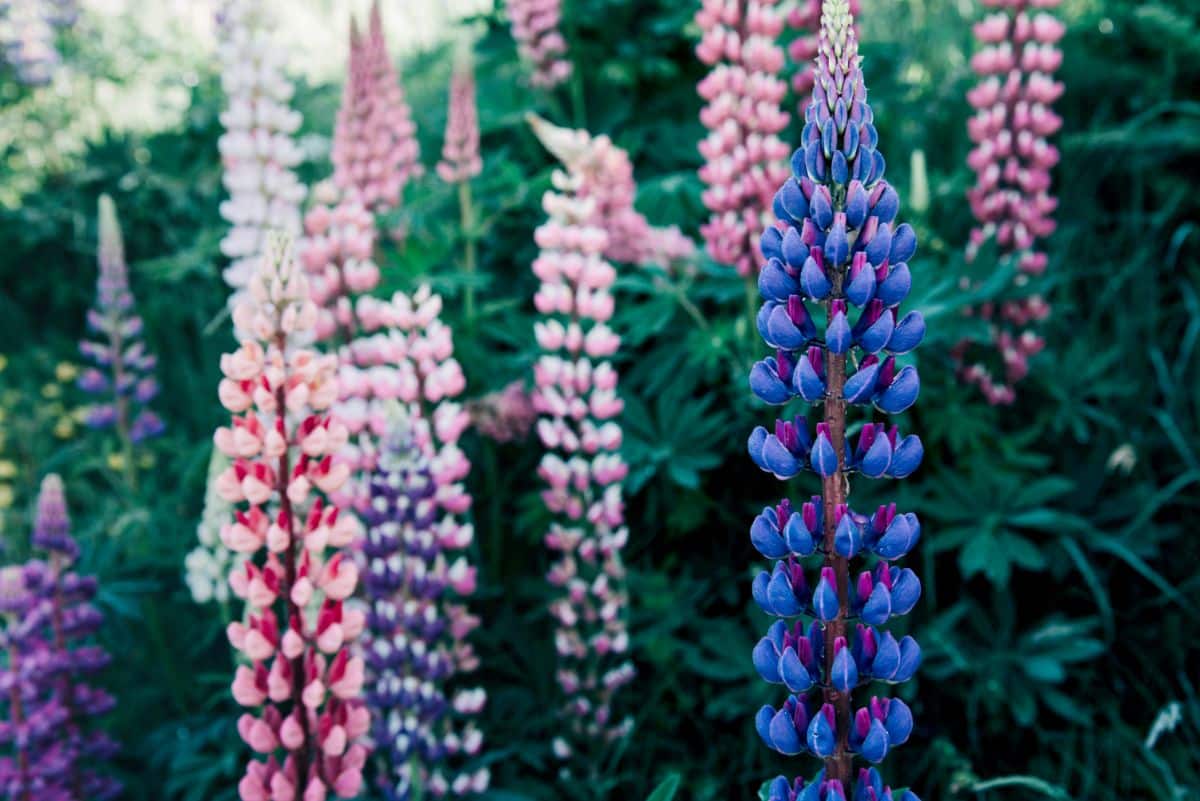
Here is how to plant perennial delphiniums in your flower beds:
- Begin by choosing an appropriate sheltered spot in your garden for your delphiniums. The delicate blooms and stalks can suffer breakage in wind.
While protecting your plants from strong winds, you need to make sure that they are getting sufficient sunlight. So, make sure whatever shelter you are giving them will still allow them at least six hours of direct sun per day.
- Prepare the soil as needed. As discussed in the section on soil requirements, this might involve adding grit, organic material, or lime.
- Dig holes for your delphiniums. Each one should be roughly twice the diameter of the nursery containers the plants came in. Each planting hole should be between a foot to a foot and a half apart so the plants have plenty of breathing space.
- Put the plants in the holes, and backfill with soil. The root ball and soil level should be the same.
- Water deeply.
Water delphiniums extra as they are establishing.
Starting Delphiniums from Seed
The ideal time for seeding delphiniums is September through March.
- Either buy or gather delphinium seeds. When you harvest seeds, label them with the date. They expire within a year, so you should aim to use them before then.
- Soak the seeds overnight. This will soften them up, which will increase germination.
- Get containers with drainage holes and fill them with seed starting mix.
- Put the seeds in your containers, and put a ⅛” layer of soil over them.
- Use a spray bottle to gently moisten the seed starting mix.
- Find a location where your seeds can germinate. The ideal temperature range is 65-75 degrees Fahrenheit. Cover the trays to keep moisture in, misting when needed.
- Wait for the seeds to germinate. Once they sprout, take the covers off and wait for them to grow leaves.
- When you see a set of leaves on a seedling, you can transplant it. Harden it before it becomes a permanent outdoor resident.
Starting Delphiniums from Cuttings
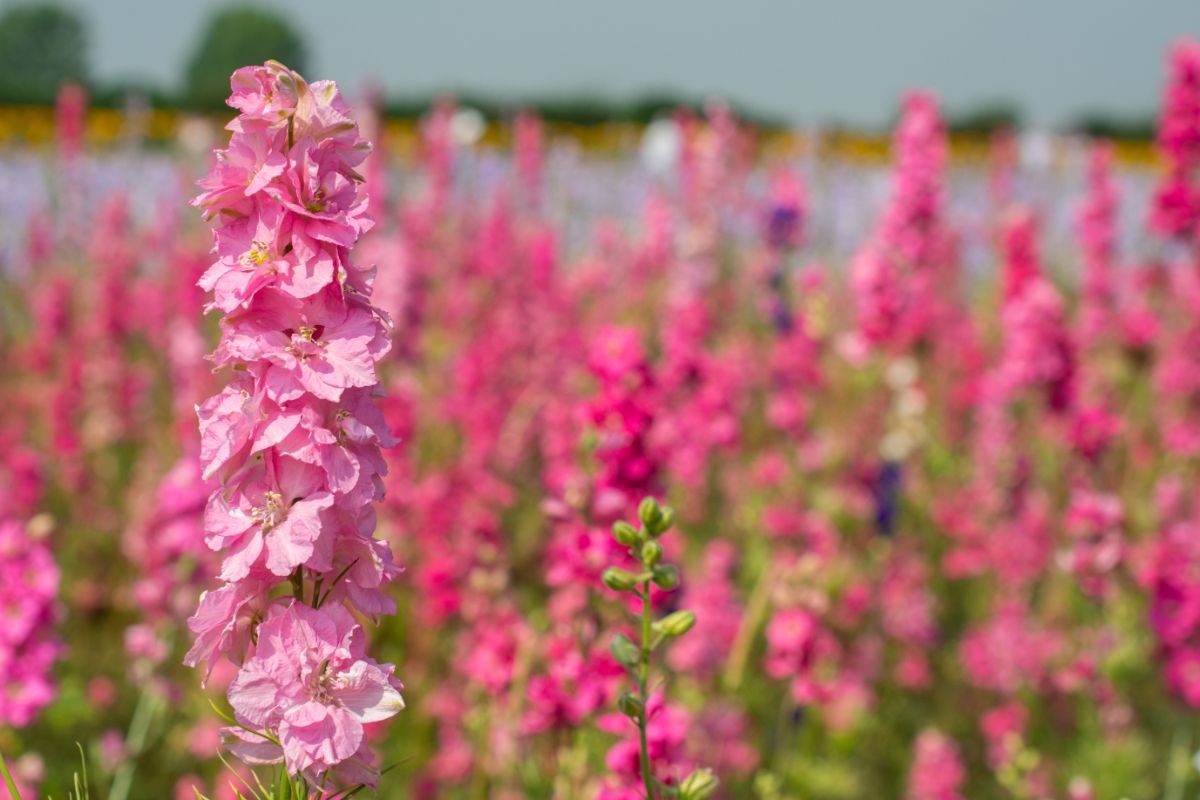
Propagating delphiniums is easy with basal cuttings. Take them in springtime.
- Sanitize a knife and use it to remove your cuttings as your delphinium produces new shoots. You will need to push the knife down right underneath the soil surface to make the cuts.
- The cuttings may have a significant amount of leaves on top. If that is the case, trim away almost all of them.
- Fill containers with a mixture of perlite and compost.
- With a spray bottle, mist the mixture.
- Push the cut ends of the delphinium cuttings down into the perlite/compost mix.
- Put a bag over the top, propping it up so that it will not touch the cuttings.
- Wait for your cuttings to form roots, misting as needed.
- When the cuttings have rooted, you can harden them and transplant them outdoors.
How to Care for Delphiniums
What do you need to do to maintain your larkspurs? Let’s explore how to fertilize, mulch, and prune your delphiniums, as well as how to stake them and protect them from diseases and pests.
How to Fertilize Delphiniums
This page quotes Utah State University Extension horticulturalist Jerry Goodspeed as saying, “After planting, fertilize delphiniums with an all-purpose fertilizer. They are somewhat heavy feeders, so they may need to be fertilized every month while they are growing.”
How to Mulch Delphiniums
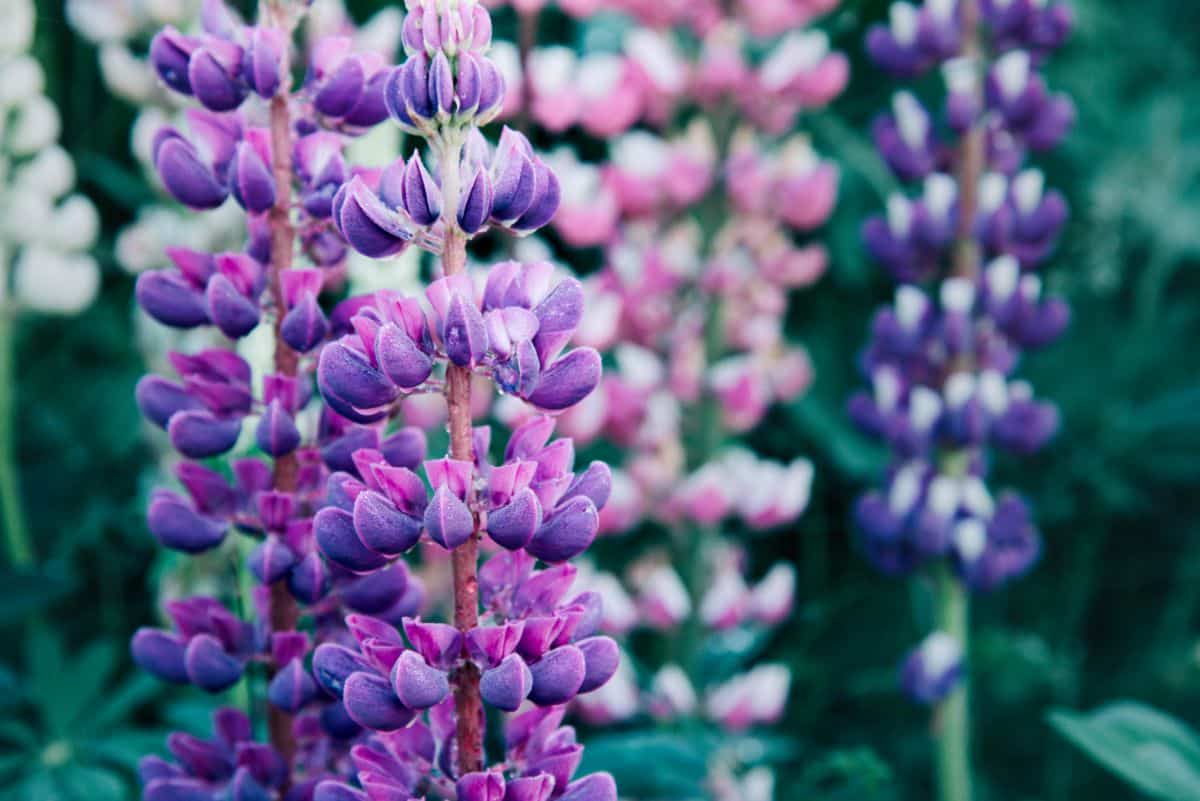
You can mulch delphinium in the winter, but you should remove the mulch right away when spring begins. During winter, it can help to insulate the soil. But left in place for too long, or piled too close to the stem, it can lead to rot.
How to Stake Delphiniums
Unsurprisingly, the tall flowers stalks of larkspurs can sometimes get to be a bit heavy on the top, which may cause them to flop over without support.
To stake delphiniums, push some bamboo stakes into the ground, and then tie the plants to the stakes loosely. Alternately, you could try using a support frame that you buy from the store.
It is ideal if you get the stakes ready to go before your delphinium does a lot of growing. This reduces the chances of damaging the roots.
How to Prune Delphiniums
Pruning your delphinium plants involves a combination of deadheading during the growing season and trimming down afterwards.
How to Deadhead Delphiniums
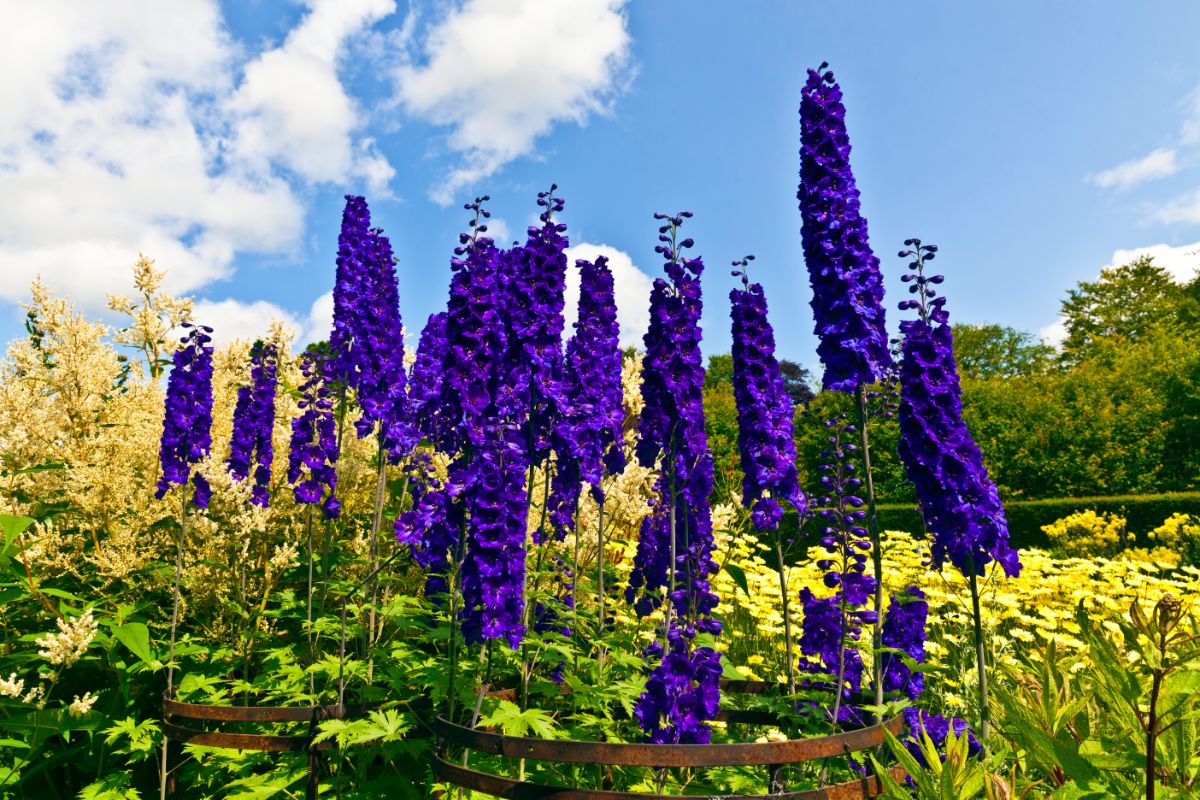
You can get an additional flush of flowers from your delphinium plant if you deadhead the spent blossoms.
Rather than pinching off the individual blooms, you should cut the delphinium stalks themselves once the flowers are wilted.
The plant will then produce new stalks. These ones will not be as large as the first ones of the season, but they should produce blooms. Do not despair if the days are already getting colder; the flowers will be fine
When to Cut Back Delphiniums
Once your delphiniums are all done blooming for the season, you can cut the plant back to tidy up for winter.
How to Divide and Transplant Delphiniums
If your delphiniums are starting to get that congested look, you can dig them up and divide them.
- Pick a cool day in spring to dig down in a circle around the entire plant you want to divide (cooler temperatures are less stressful for dividing delphiniums). Make sure you are far enough away that you are not cutting into the roots. Then, push your shovel under the roots and lift the plant out of the ground.
- Gently run water over the root ball to wash away debris.
- If you spot root rot anywhere, cut away the affected roots.
- Use a knife to separate the root ball of the parent plant into clumps. Each of them needs a minimum of three shoots.
- Plant the newly divided delphiniums.
- Backfill the soil and water well.
As you did when you originally planted your delphinium, you need to continue providing extra water while your divided plants establish.
Are Delphiniums Vulnerable to Diseases or Pests?

Delphiniums may sometimes contract diseases such as fungal spots, powdery mildew, blight, crown rot, root rot, gray mold, and so forth. The best way to prevent a lot of these issues is simply to ensure adequate air circulation.
Some insects that can bug your delphiniums include aphids, mites, stalk borers, and cutworms. There is also a pest called the larkspur miner, which is a type of blotch miner.
Something else that can be a serious problem for delphiniums is slugs and snails. Slug damage can accumulate fast, so you will need to be tireless in your diligence if these are common in your yard, because they love larkspurs.
Good news though—deer and rabbits usually stay away from delphiniums due to their toxicity. So, mammals are one less thing to worry about!
Recommended Planting Combinations for Delphinium
Here are some plants that will grow nicely alongside your delphiniums:
- Hollyhocks. Just as larkspurs are classic cottage garden flowers on tall stalks, the same is the case with hollyhocks. Since they are both summer bloomers, they can blossom at the same time. You can choose colors that match or contrast.
- Foxgloves. These spring-blooming flowers likewise grow on stalks, and can beautify your garden while you await your summer delphiniums.
- Carnations: Also popular in cottage gardens are carnations, which have similar sun requirements to delphiniums.
- Any plants you want to keep deer away from. You could set up the tall delphinium plants as a kind of “screen” to ward deer away from your other plants.
Frequently Asked Questions About Growing Delphiniums
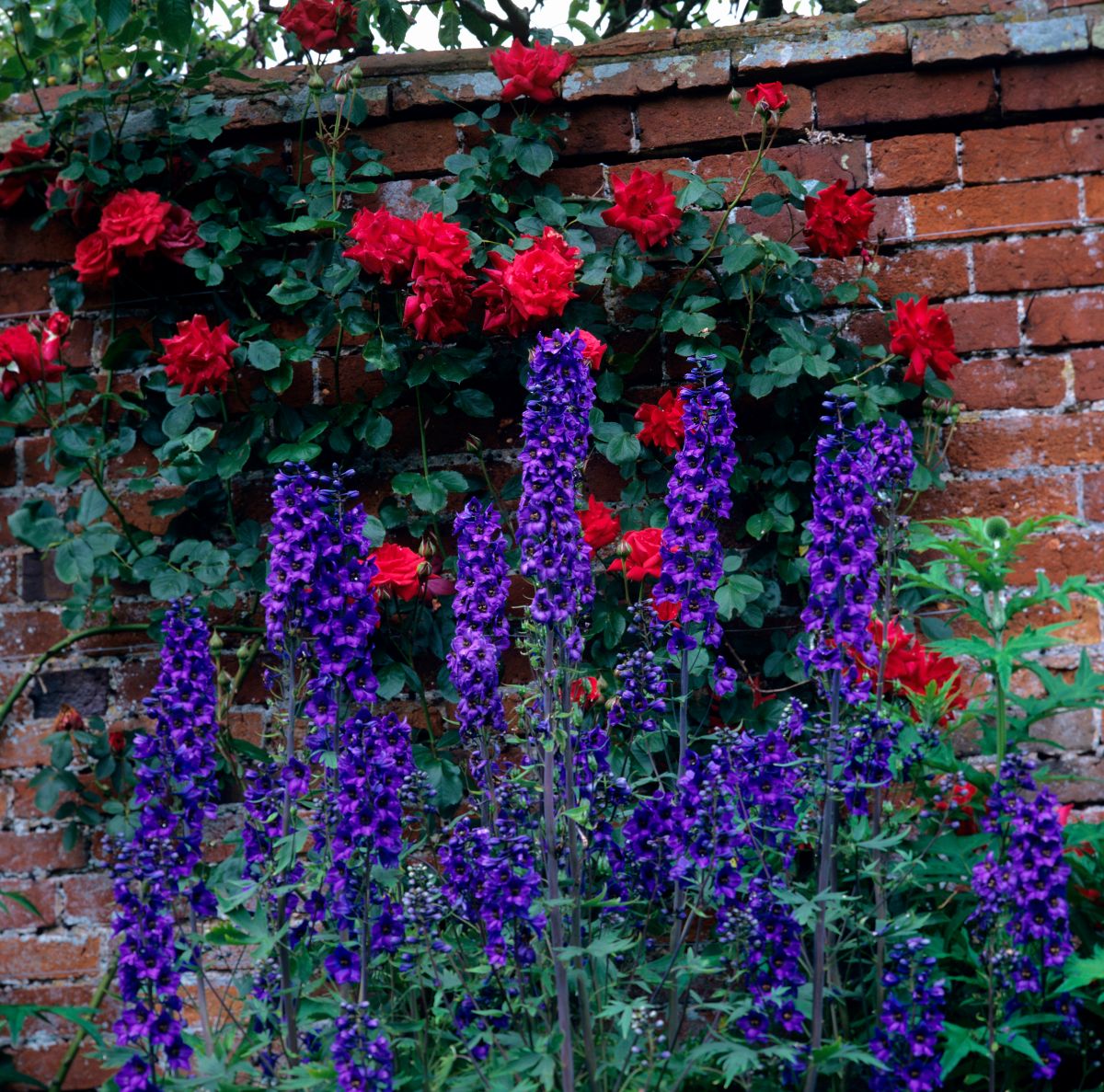
Spotting signs of pest activity? Deer and rabbit are not likely to eat delphiniums, but slugs and snails are. It could also be an insect. See the section on pests and diseases.
Yes, delphinium is toxic to cats and dogs, not to mention horses and cattle. Ingesting it can result in serious illness or death for any of these animals.
In fact, larkspur poisoning is actually a major problem for those in the cattle industry, costing ranchers millions of dollars.
Suffice to say, no matter what types of animals you keep, you should ensure that they do not go anywhere near your delphinium plants.
Yes, delphinium is toxic to human beings. Eating it can result in digestive pain and irritated skin. In really bad cases, people can be paralyzed or killed by eating delphinium.
This does not seem to be the case with all delphinium, but you shouldn’t eat any delphinium.
This research article about delphinium use in Nepal states, “Roots of the plants from the genus Delphinium have been used for a long time for headache, epilepsy, mania, paralysis, rheumatism, toothache, and various types of pain. However, many species of Delphinium are poisonous and look quite similar in morphology to the beneficial ones. As a result, accidental poisoning is common.”
Every single part of the plant is unsafe to consume. But poisoning can be extra bad when one consumes newer growth.
Even touching the plant is enough to cause skin irritation symptoms in some individuals. If that applies to you, wear gloves when you are handling your delphiniums.
That depends in part on where you are growing them. National Garden Bureau writes, “Delphiniums are very easy to grow in the northern climates with very little maintenance. As a perennial, they tolerate cool northern climates and overwinter with ease as a hardy perennial in Zone 4. Some misunderstanding about non-hardiness actually comes from hot and humid climates, which the plants cannot tolerate for long periods of time. Delphiniums act more like annuals in the southern climates.”
Yes, they can spread, but they are not invasive.
Where to Buy Delphiniums
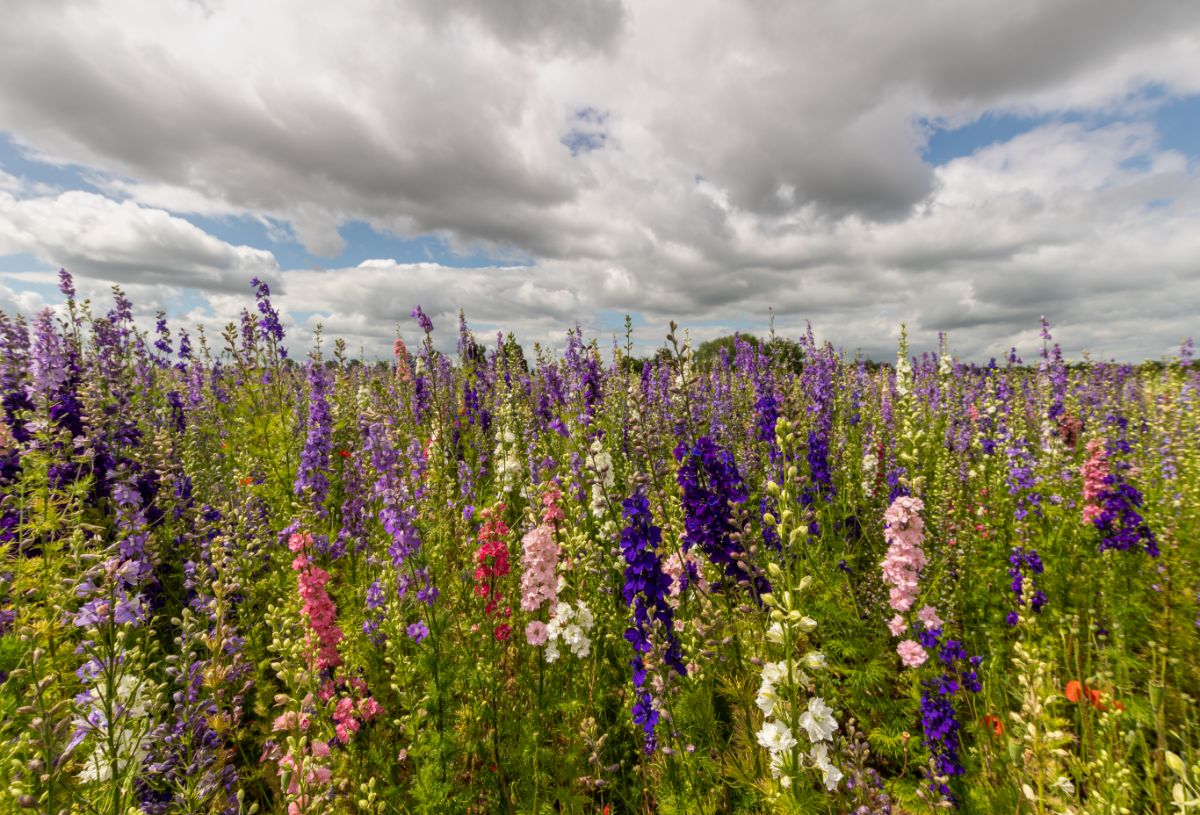
Are you ready to bring the cottage garden beauty of delphiniums to your own summer landscape? Click the link below to shop varieties of delphiniums now.


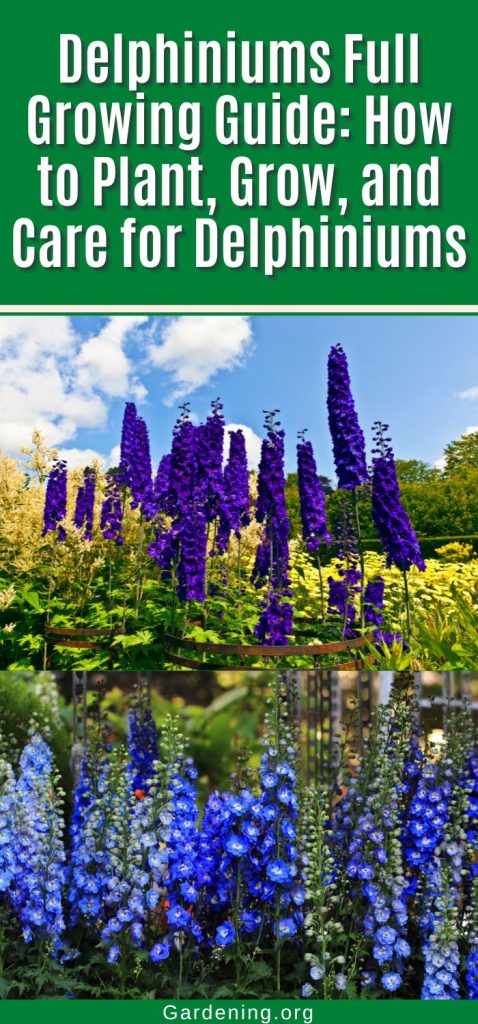
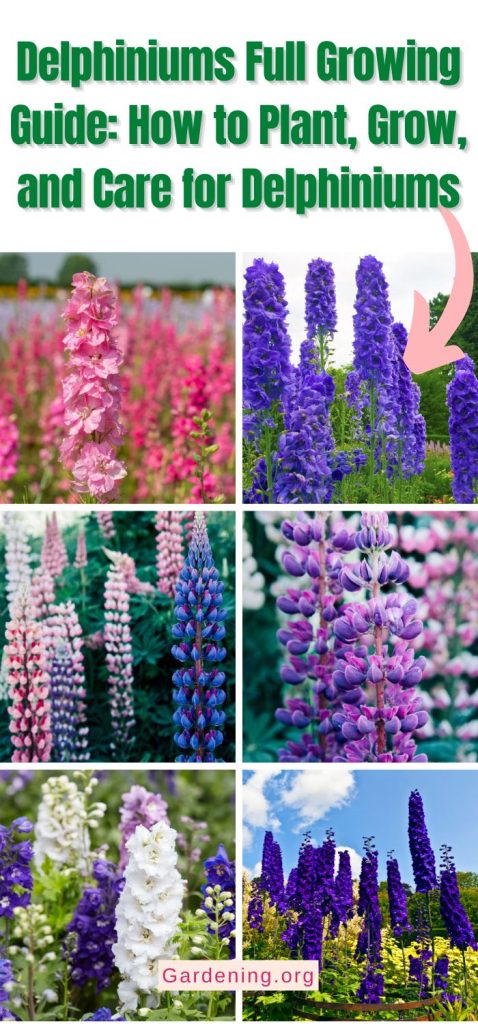
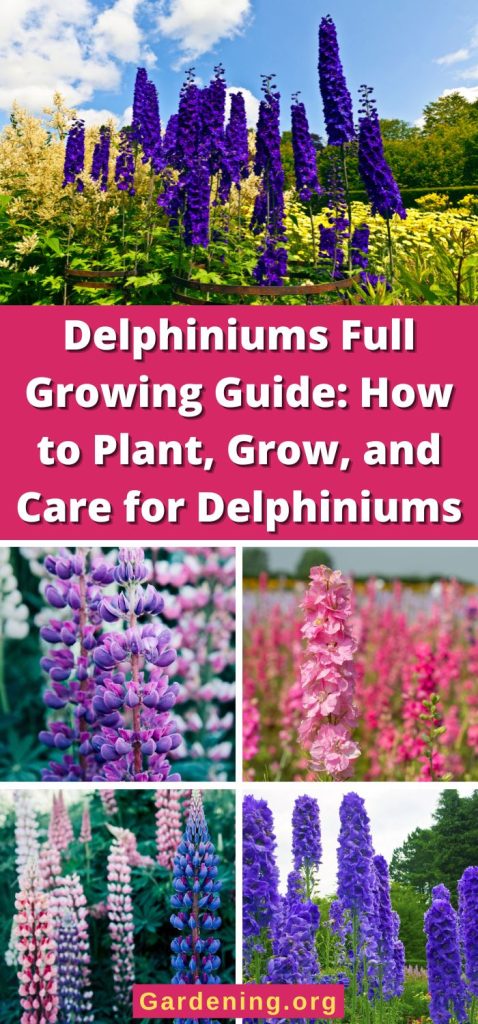

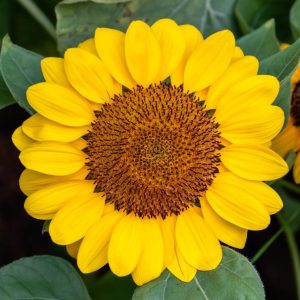
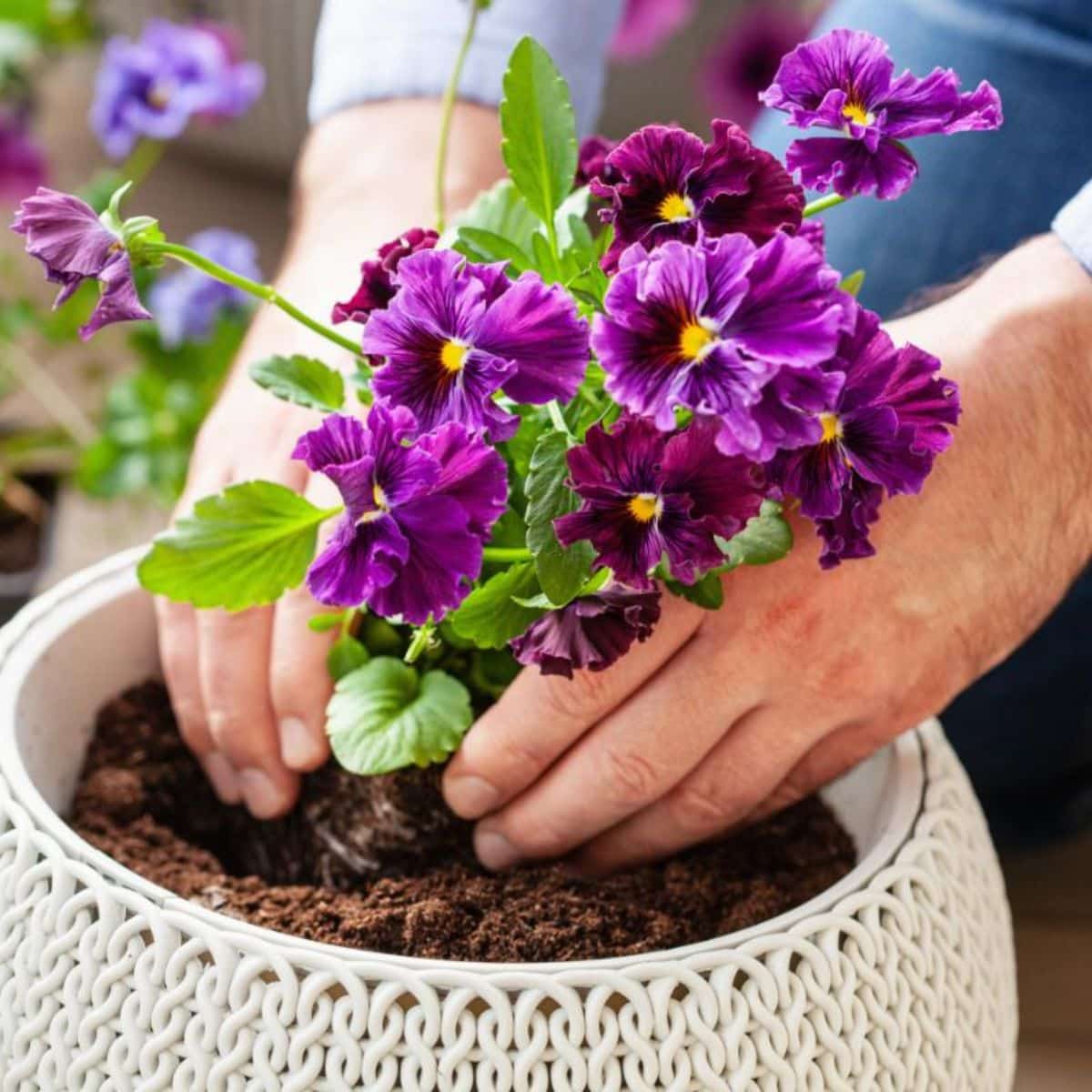
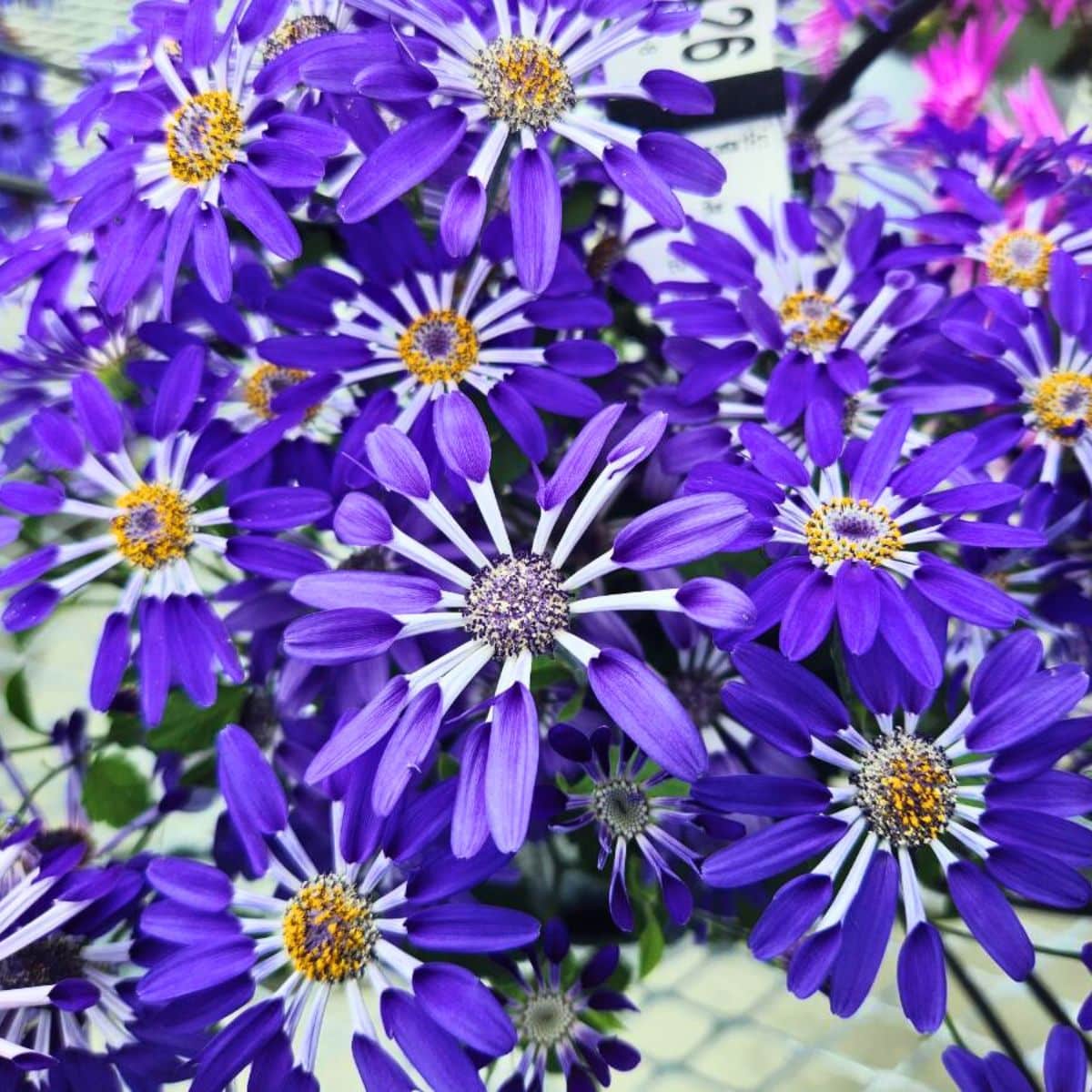
Darlene
Thank you so much for the examples of all the delphiniums and the planting and caring. I had a delphinium last year and the year before. I loved it. Last year when it came back it didn't seem to do well, but I didn't know what I learned reading your article. I'm going to try again this year now but I do have clay soil so I use the suggested amendments.